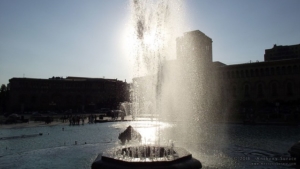3 Efforts to Improve Water Management in Armenia

With 25.7 percent of the population living below the poverty line, the people of Armenia consider water a luxury. Armenians face daily water shortages and unclean water supply in their homes. Despite this, several groups are working together to improve water management in Armenia. Maintaining a stable supply of water is an important step in lowering poverty and improving the lives of citizens.
3 Efforts to Improve Water Management in Armenia
- Relief to Yerevan: The World Bank sponsored a $50 million project to make water more accessible to Armenians living in the capital city, Yerevan. Before the intervention, families would have access to water in their homes for approximately six hours per day, and the water was usually unclean. Now, 332,000 families in the capital have access to water for 21 hours per day, and thanks to nine new chlorination stations, the water is cleaner and safer. The World Bank also recognized the need to monitor the water supply to prevent waste, so they introduced a software program that oversees the entire network of pipes and water mains. The program makes it possible to pinpoint areas within the network that need renovation or attention to maintain a stable supply of water. This program could help thousands of Armenians if it were implemented in other cities, but so far, it has brought a sense of security and relief to Yerevan.
- Wastewater Treatment Methods: Before 2010, the wastewater treatment system allowed unsanitary water to contaminate agricultural lands, causing a jeopardized food supply and an increased risk of disease. In the village of Parakar, Global Water Partnership’s Armenia branch stepped in to reform the wastewater treatment methods. They chose a cost-effective technology that treats domestic wastewater so that it can be later used for irrigation purposes and vice versa. This allows water to be recycled and reused, promoting a message of sustainability. The treatment program also focused on public awareness of the new treatment technology, involving the community in the process which facilitated the plan’s success.
- Water Within Reach: Armenians used to have to travel very far to get potable water. Some families were forced to drive over an hour to get to the public tap, spending a large portion of their income on the expenses associated with this travel. The Asian Development Bank launched a project that aimed to reduce the cost of obtaining water by making it clean and available within people’s own homes, benefitting more than 600,000 people across the country. Having access to water in the home for at least 17 hours per day now costs $12 per month – significantly less than what it previously cost to make the drive to the public tap. This initiative marginally contributes to the decrease in poverty among Armenian families, and it improves the quality of their lives significantly.
The World Bank, the Global Water Partnership and the Asian Development Bank have changed lives because of their work to improve water management in Armenia. This is a small but mighty step towards decreasing poverty in Armenia.
– Katherine Desrosiers
Photo: Flickr
